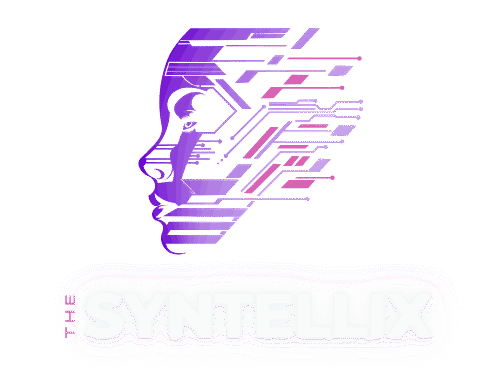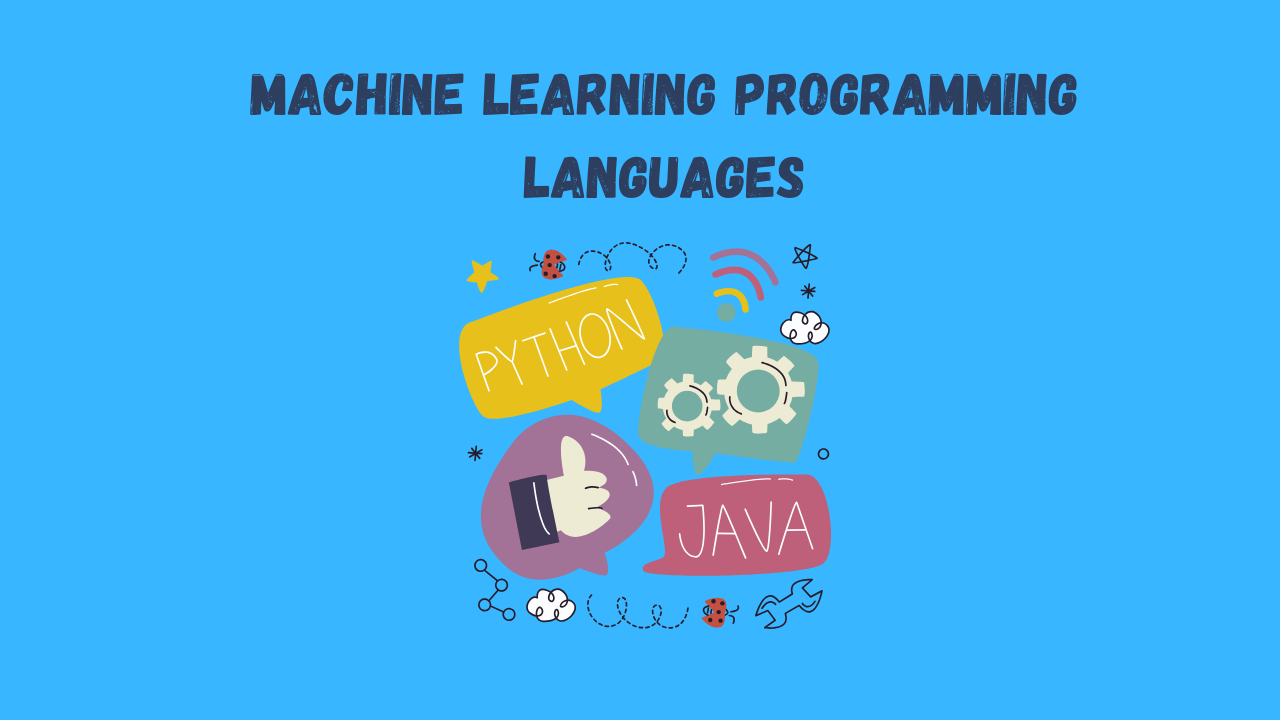For years now, I’ve had countless conversations with people who are just starting to dip their toes into the world of machine learning. The first thing they always ask me, almost without fail, is which machine learning programming languages they should be using. It’s a great question, and it’s one that I think can feel completely overwhelming when you look at all the resources available online.
You’ll see endless lists and debates, with everyone passionately defending their favorite tool. I remember when I was starting out, I felt a similar paralysis of choice. Was I supposed to learn Python, or was R the real king for data science? Did I need to understand C++?
The noise was deafening, but over time, I have come to realize something important. The conversation has shifted from a competition between languages to a conversation about what you are trying to accomplish. In most cases, there is one clear and obvious choice for almost everyone, but knowing why and understanding the other options is what separates a casual user from someone who is truly effective.
I’ve spent a lot of time working on projects and talking to researchers, and I’ve come to a pretty solid conclusion about the machine learning programming languages that matter most today.
For most of us, the choice isn’t that complicated. The best choice is almost always Python, and it’s not even close. But that doesn’t mean other languages don’t have their place.
In fact, understanding the unique strengths of a few other machine learning coding language options is key to becoming a well-rounded practitioner. The best way to think about it is to see the languages as different tools in a toolbox, each designed for a specific purpose.
The Case for Python: The Best Machine Learning Programming Languages
When I first started to get serious about machine learning, I was drawn to Python because everyone I spoke to kept recommending it. And now, after years of using it for everything from quick experiments to complex deep learning models, I understand why it’s so popular.
Its rise to dominance as the best programming language for machine learning is a story of community, simplicity, and an incredible ecosystem of tools.
What makes Python the go-to choice is its simplicity. The syntax is clean, readable, and often feels like writing in plain English. I’ve seen beginners with no prior programming experience pick up the basics of Python and start building simple models in just a few weeks.
It just gets out of your way and lets you focus on the problem you are trying to solve, which is a huge advantage. This accessibility means that you can spend more time on the core concepts of machine learning itself, like understanding data, algorithms, and models, rather than getting bogged down in complex syntax. This is why for anyone asking which is the best language to learn machine learning, my answer is consistently Python.
But its ease of use is only half the story. The real power of Python lies in its libraries and frameworks. It’s a goldmine of pre-built tools that make every step of the machine learning process easier. I can tell you from personal experience that these libraries save you countless hours.
For example, if I’m doing exploratory data analysis to understand a new dataset, I use a library called Pandas. With a few lines of code, I can load a dataset, clean it up, and get a feel for the data’s structure. If I’m working with numbers and need to perform complex mathematical operations, NumPy is the library I turn to. It’s written in a much faster language like C++ under the hood, but I get to use it with the simplicity of Python. It’s the best of both worlds.
When it comes to building and training the actual models, the Python ecosystem is unmatched. For classical machine learning algorithms, you have Scikit-learn, which has been a staple in my work for years. It has everything you need for classification, regression, and clustering.
For more advanced deep learning, the community has rallied around two main frameworks, TensorFlow and PyTorch, both of which are written in Python. These tools have been developed by giants like Google and Meta and they put the power of building incredibly complex neural networks at your fingertips.
I remember working on a project to classify images, and using PyTorch made the entire process of defining the model, setting up the training loop, and even deploying the model feel surprisingly straightforward. The sheer volume and quality of these resources, coupled with a massive, active community, is why Python is the default machine learning programming languages for a lot of us.
Of course, Python isn’t perfect. As an interpreted language, it can be slower than compiled languages like C++ or Java. While this isn’t an issue for most projects, especially during the prototyping and experimentation phase, it can become a bottleneck when you need to run a model in a high-speed production environment or on a resource-constrained device.
But even here, the Python ecosystem has an answer. I’ve often seen people use Python to build their models and then rewrite just the most performance-critical parts of their code in C++, or use tools like Cython (c extension for python) or Numba that compile Python code to a faster native code. It’s an elegant solution that lets you keep the flexibility and ease of Python while getting the performance boost you need.
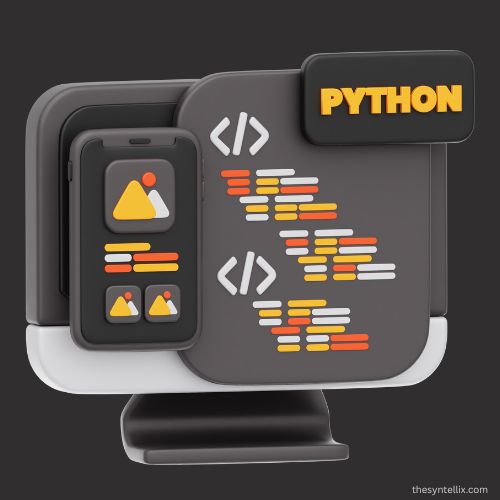
R: The Statistician’s Best Friend
While I use Python for most of my machine learning work, I have a deep appreciation for another language that holds a special place in the data science community: R. I’ve often found myself using R when I needed to do very specific statistical analysis or create beautiful, publication-quality visualizations.
R was built from the ground up by statisticians for statisticians. This is its core strength. Its libraries, like ggplot2 for visualization and the numerous packages for statistical tests and modeling, are incredibly robust and fine-tuned for academic research.
I remember a project where I had to do a complex time-series analysis with a colleague, and they insisted we use R. While I initially resisted, I quickly saw the value. R has a way of handling data that feels very intuitive for statistical work. It made visualizing the data and running specific statistical tests much more streamlined than what I was used to in Python.
So, if you come from a statistics background or are working in a field like biostatistics, social sciences, or finance where deep statistical rigor is paramount, R might be the best language to learn for machine learning for you. It’s a powerhouse for that kind of work.
The main drawback for R, in my opinion, is that it is less of a general-purpose language than Python. While you can build machine learning models in R, it can be a bit more challenging to integrate R code into a larger software application or to deploy it on a web server. The community is also smaller than Python’s, which can sometimes make finding resources a bit harder, but it’s still a fantastic tool to have in your back pocket.
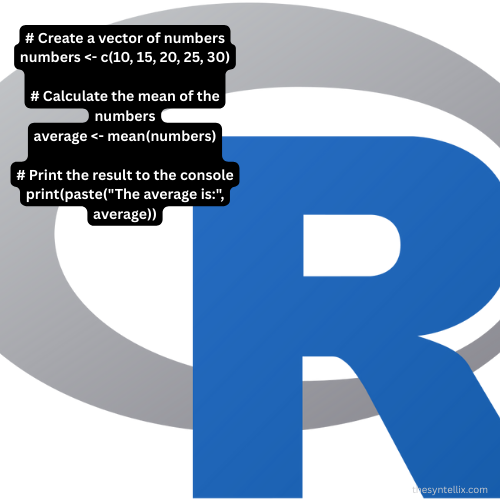
The Other Tools in the Toolbox (Top 6 Machine Learning Programming Languages)
Beyond the two giants, Python and R, there are a few other programming languages that are worth knowing about, each with its own niche in the world of machine learning.
C++, for example, is the language I use when performance is the number one priority. Most of the powerful libraries in Python, like TensorFlow and PyTorch, have their core components written in C++. That’s because C++ is a compiled language that gives you granular control over memory and hardware, making it incredibly fast.
When you need to deploy a model to a device with limited resources, like a smartphone or an embedded system for a robot, you often have to use C++ to get the necessary speed and efficiency. It’s not a language you would typically use for the initial research and development of a model, but it is indispensable for production.
So, while it’s probably not the first machine learning programming languages you’ll learn, it’s a critical one for anyone working on performance-critical systems.
Then there’s Java, which has a strong presence in large-scale enterprise applications. If you are working in a company where the entire software infrastructure is built on Java, it can make sense to use it for your machine learning projects. Java has solid libraries like Deeplearning4j and Weka that allow for model deployment and integration into existing systems. It’s not a go-to for research, but its reliability and scalability make it a great choice for certain business applications.
Julia is another language that’s been on my radar for a while. It was designed specifically for numerical and scientific computing and has a syntax that is reminiscent of Python, but it offers the speed of C++. The community calls this the “two-language problem” – where you use a slower language for prototyping and a faster one for production.
Julia aims to solve that by being both fast and easy to write. While it doesn’t have the same vast ecosystem as Python just yet, it’s a powerful tool and an exciting one to watch. I’ve run a few simulations in Julia, and the speed was truly impressive.
Finally, there’s Scala, another language that runs on the Java Virtual Machine (JVM). Its strength lies in its ability to handle big data. Scala is the primary language for Apache Spark’s MLlib, making it an excellent choice for distributed computing and working with massive datasets. It combines object-oriented and functional programming paradigms, which some find more expressive and powerful than other languages. If you’re building machine learning models that need to process terabytes of data across a cluster of machines, Scala is a fantastic language to have in your skill set.
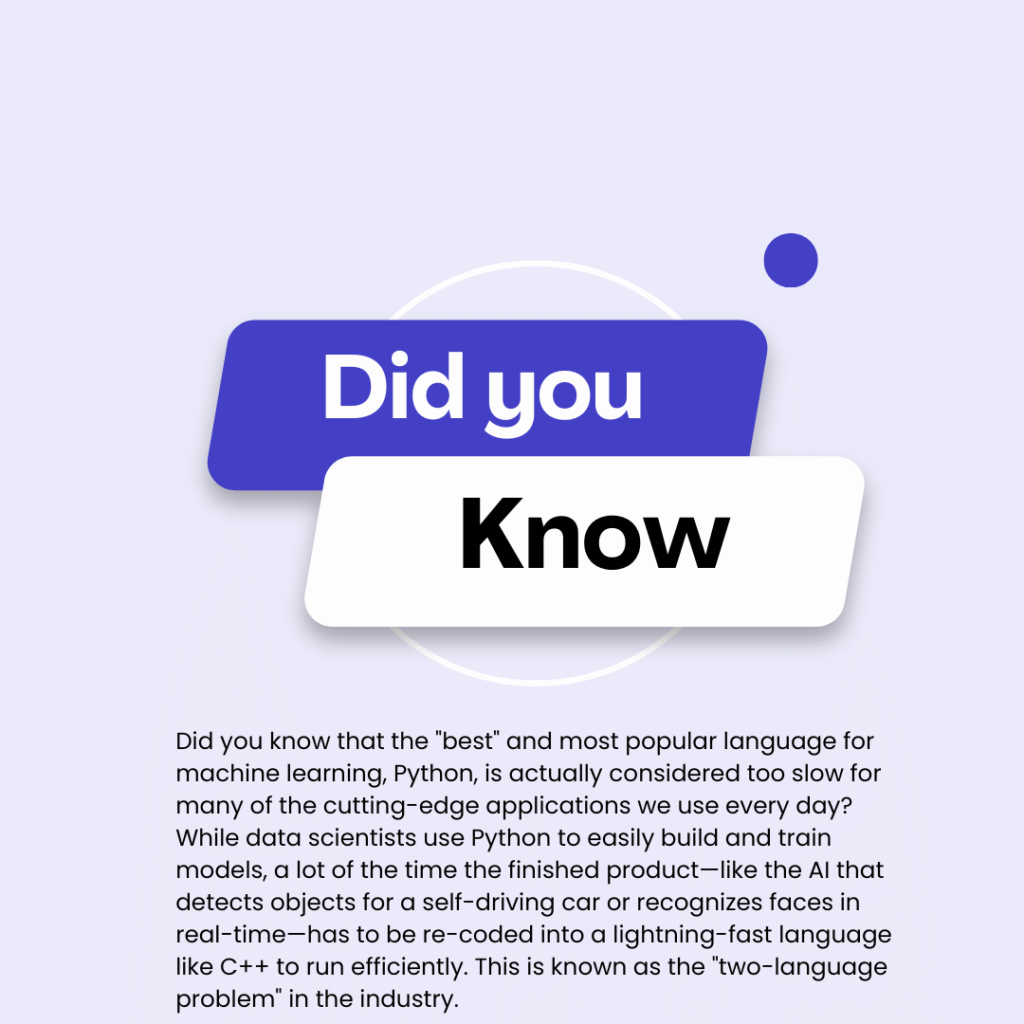
How to Choose and How I Use Them
So, how do you decide which one of these machine learning programming languages to focus on? As I said before, I think for the vast majority of people, the clear answer is to start with Python. The learning curve is gentle, the community is immense, and the libraries are so good that you can build almost anything you want. I believe it’s the best machine learning coding language for a beginner, and it’s likely to be the one you’ll use for most of your career.
But for me, being a power user of machine learning isn’t just about using one language. It’s about knowing when to use the right tool. My personal workflow often looks like this: I will do all of my initial data exploration, model building, and experimentation in Python using libraries like Pandas, Scikit-learn, and PyTorch.
If I’m working with data that requires a deep statistical dive, I might switch over to R for a bit, use its powerful visualization tools, and then bring the results back into my Python workflow. If the project ever gets to a point where I need to deploy a model to a mobile device or a high-speed trading system, I know that I will probably need to work with a teammate to re-implement parts of the model in C++ to get the performance boost we need.
The most important takeaway here is not to get stuck in the weeds of which language is “the best” forever. The landscape of machine learning programming languages is always changing, but the fundamental concepts of machine learning remain the same. So, just pick one, start building things, and once you have a solid foundation, you will naturally discover the value of the other tools in the toolbox. The more you work on real problems, the more you will understand the nuances of each language and how they can all fit together to help you get the job done.
Conclusion
My final thought on this is that the best machine learning programming languages is the one that gets you excited to start building things. For most people, that’s Python. But as you grow, you’ll realize that each of these languages has a unique role to play. The more tools you have in your toolbox, the more problems you can solve.
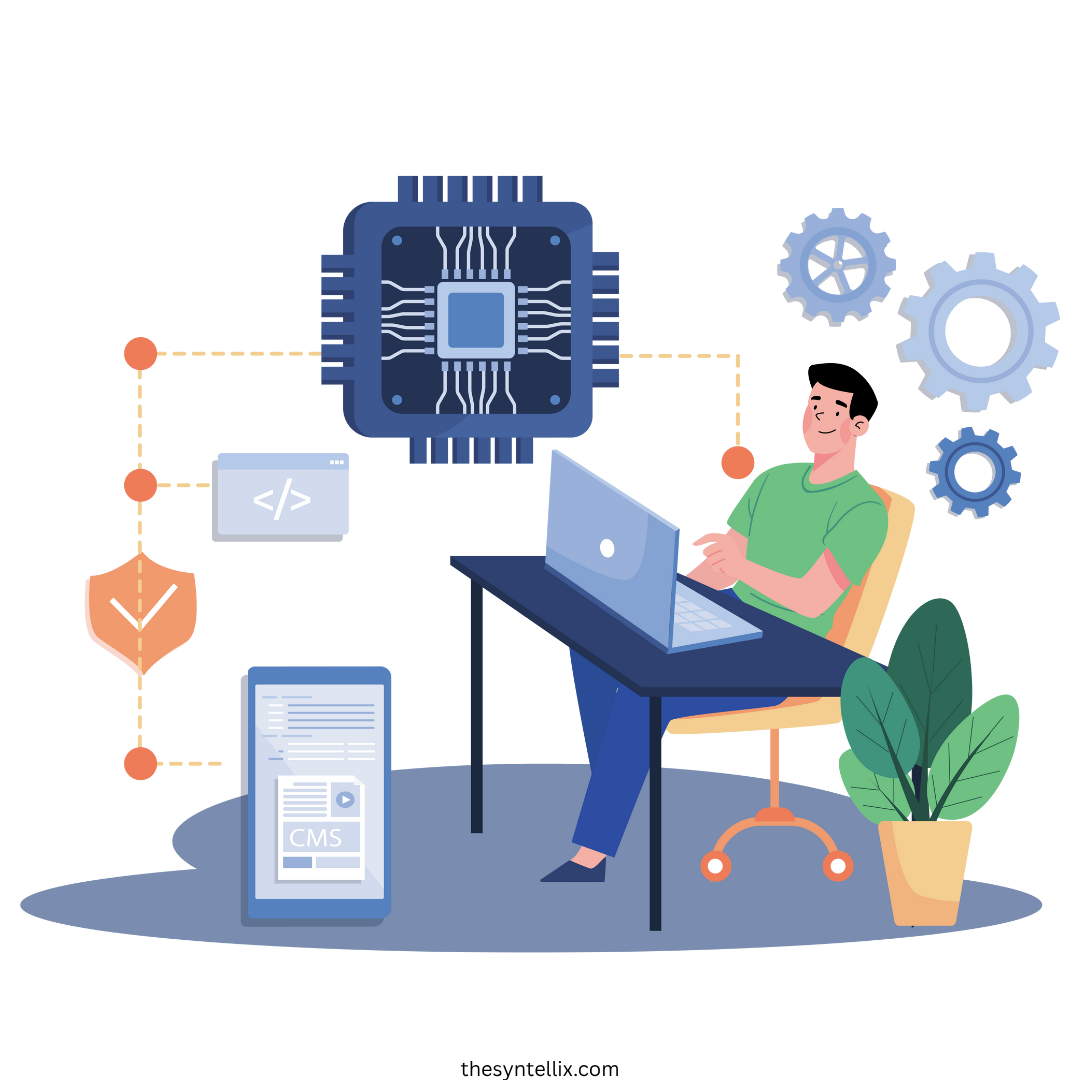
Stay ahead of the curve with the latest insights, tips, and trends in AI, technology, and innovation.
